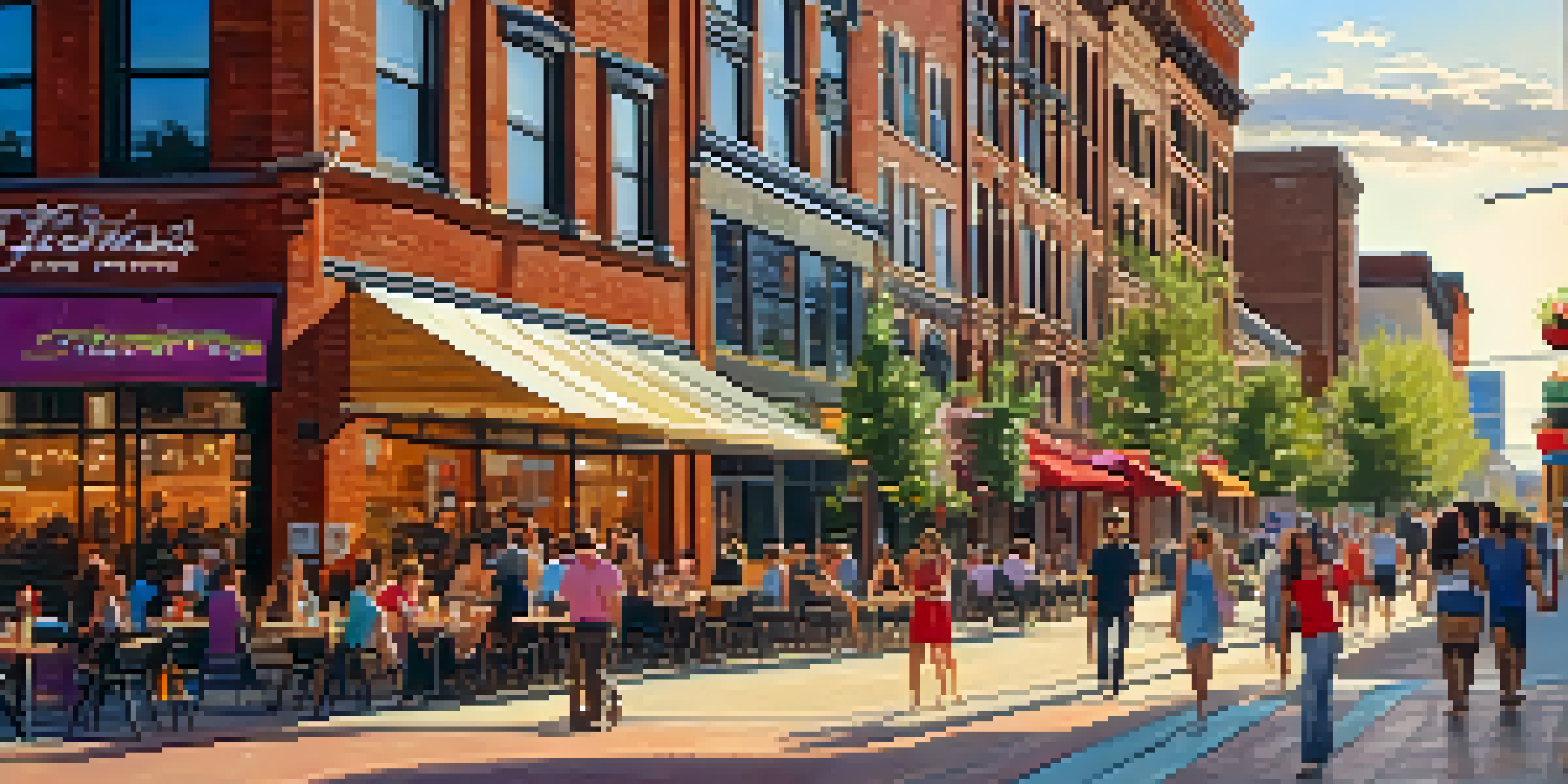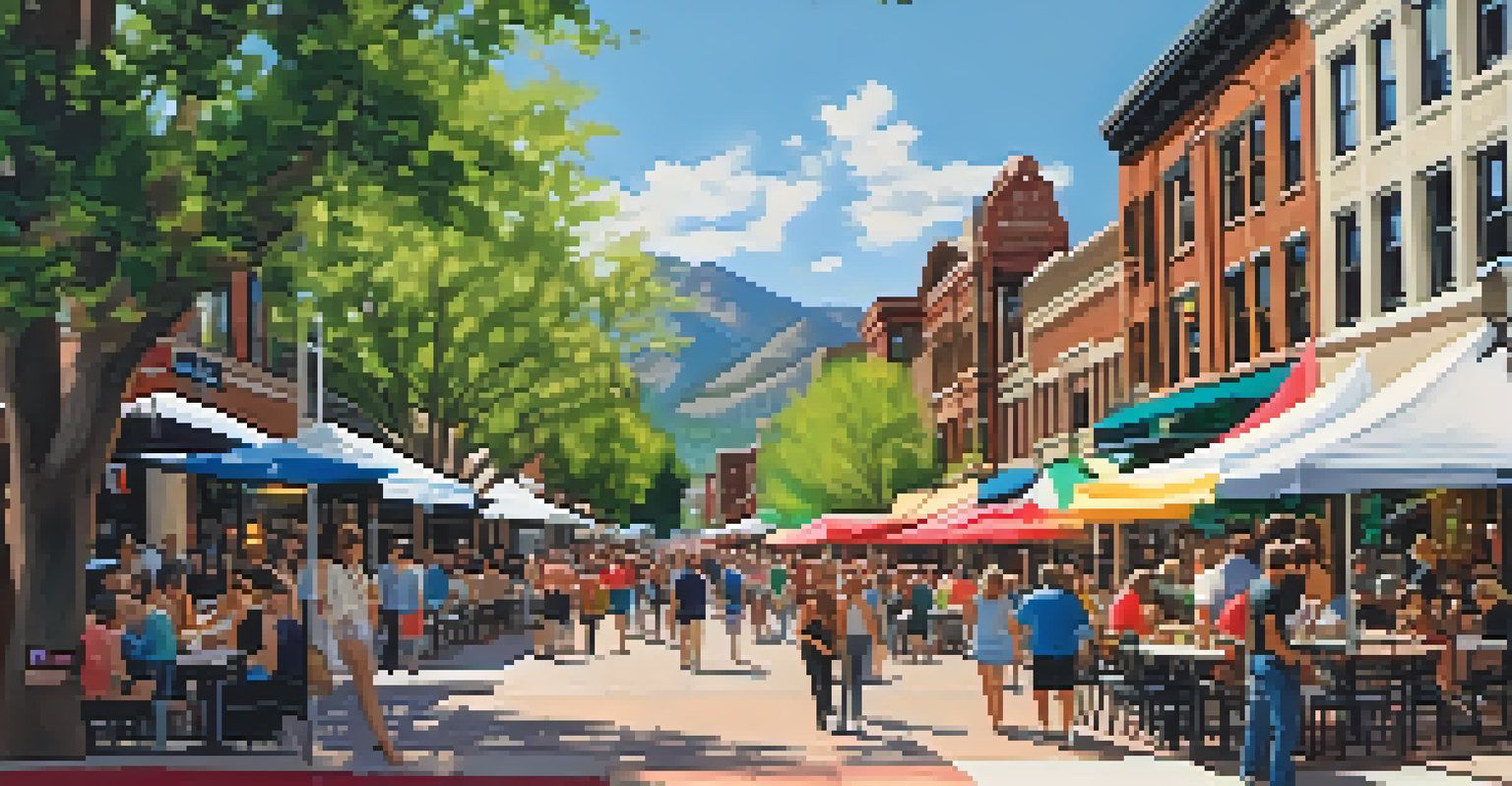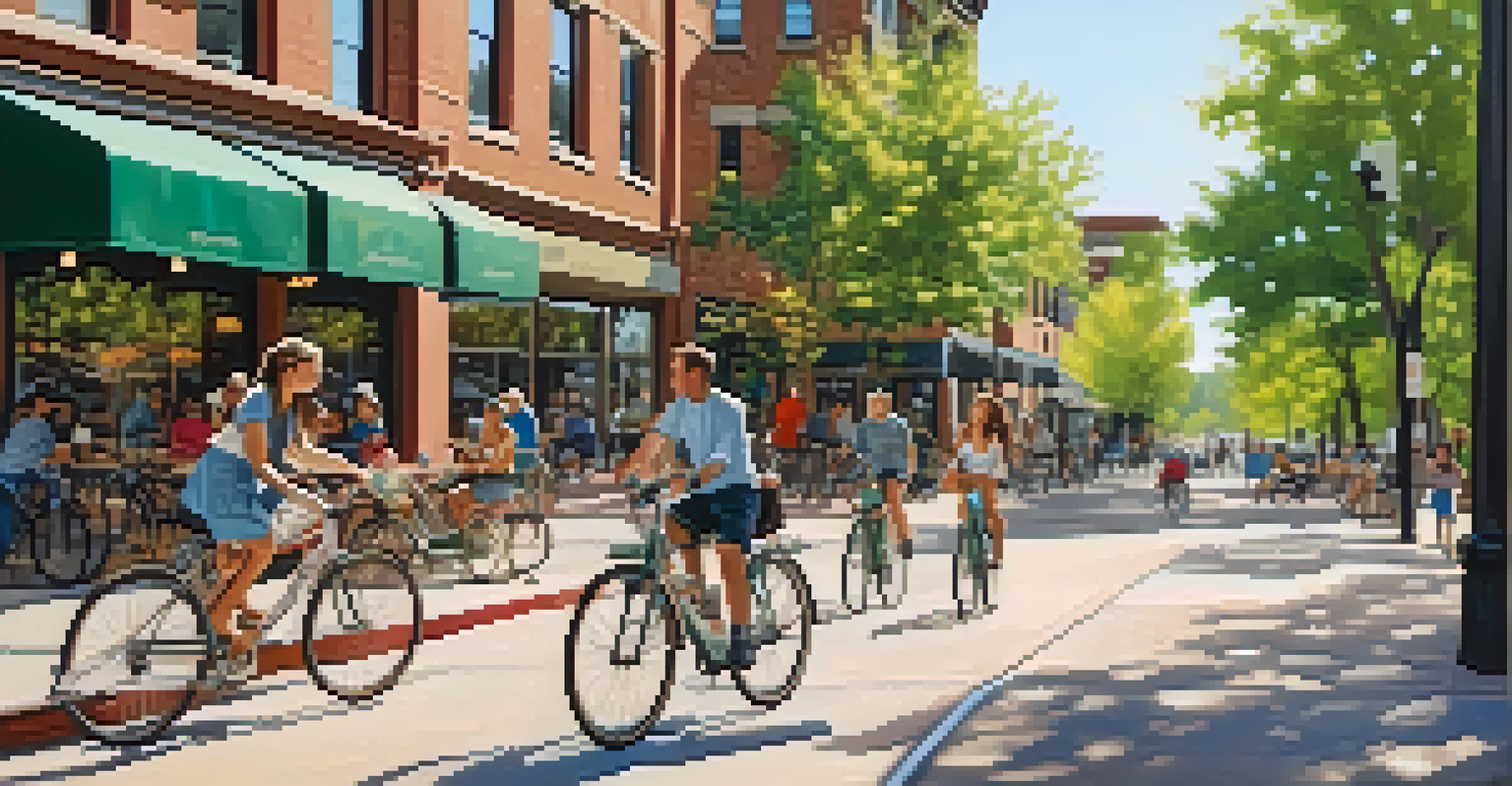Revitalizing Downtown Areas: Colorado's Success Stories

The Importance of Revitalizing Downtown Areas
Revitalizing downtown areas is essential for fostering community engagement and economic growth. These spaces often serve as the heart of a city, where culture, commerce, and connections thrive. When a downtown area is vibrant, it attracts visitors and boosts local businesses, creating a cycle of prosperity.
Revitalizing our downtowns is not just about beautification; it's about creating spaces where community and economy can thrive together.
Moreover, revitalization efforts can enhance the quality of life for residents by providing access to parks, restaurants, and cultural events. This transformation can also address urban blight, reducing crime and improving safety. Ultimately, a lively downtown area becomes a source of pride for its community, reflecting its unique identity.
In Colorado, various cities have embarked on revitalization projects that have not only transformed their landscapes but also their local economies. These success stories can serve as valuable examples for other regions looking to breathe new life into their own downtowns.
Success Story: Denver's LoDo District
The Lower Downtown (LoDo) district in Denver is a prime example of successful revitalization. Once a neglected area filled with abandoned warehouses, LoDo has transformed into a bustling hub with trendy restaurants, galleries, and shops. This revitalization began in the 1990s and has continued to evolve, attracting both residents and tourists alike.

Key to LoDo's success was the preservation of its historic architecture, which adds character and charm. The mix of new developments alongside restored buildings creates a unique atmosphere that draws people in. As a result, LoDo has become a model for urban redevelopment, proving that history and modernity can coexist beautifully.
Community Engagement Drives Success
Active participation from residents in planning revitalization projects leads to more successful and meaningful urban transformations.
Furthermore, the addition of public spaces, such as parks and outdoor venues, has made the area more inviting. Events like the Denver Farmers Market have become staples, bringing the community together and enhancing the district's liveliness.
Fort Collins: A Blend of Nature and Urban Life
Fort Collins has successfully blended its natural surroundings with urban revitalization, creating a downtown area that's both inviting and engaging. The city's commitment to preserving its natural beauty has resulted in the development of green spaces, bike paths, and pedestrian-friendly streets. This approach encourages residents to explore their downtown while enjoying the outdoors.
A vibrant downtown is the heartbeat of a city, reflecting its culture, history, and the aspirations of its people.
The revitalization efforts have also focused on enhancing local businesses, with incentives for shops and eateries to set up in the area. This has led to a flourishing local economy, where unique businesses contribute to a sense of community. Events like the Fort Collins Music Experiment showcase local talent and attract visitors, further boosting the downtown's popularity.
By fostering a strong connection between nature and urban life, Fort Collins has established a downtown that not only attracts visitors but also nurtures its residents. This balance is a testament to the city's dedication to creating an environment where people want to live, work, and play.
Boulder: Reviving the Historic Pearl Street Mall
Boulder's Pearl Street Mall is a shining example of how historic preservation can drive revitalization. Originally established in the 1970s, this pedestrian mall has evolved into a vibrant gathering place for locals and tourists. Its unique shops, street performers, and outdoor dining create an inviting atmosphere that keeps visitors coming back.
The city has invested in regular upgrades to the mall, ensuring it remains a relevant and appealing destination. This includes adding art installations, landscaping, and hosting community events, which foster a sense of belonging. As a result, Pearl Street has not only preserved its historical charm but has also become a vital economic engine for the city.
Balance of History and Modernity
Maintaining historical architecture while incorporating new developments creates vibrant downtowns that attract diverse visitors.
Moreover, the success of Pearl Street encourages other areas in Boulder to pursue similar revitalization efforts. By focusing on community engagement and maintaining a commitment to preserving local history, Boulder has created a thriving downtown environment that enhances the quality of life for its residents.
Colorado Springs: The Transformation of Downtown
Colorado Springs has undergone a remarkable transformation in its downtown area over the past decade. Once characterized by empty storefronts and minimal foot traffic, the city has invested in revitalization projects that have breathed new life into the area. This has involved creating pedestrian-friendly spaces, improving infrastructure, and promoting local businesses.
One of the standout initiatives is the Downtown Partnership, which works to enhance the vibrancy of the area through events, marketing, and community engagement. This collaborative effort has led to a rise in new restaurants, shops, and entertainment options, making downtown a destination for both locals and tourists.
As a result, Colorado Springs has not only improved its downtown experience but has also fostered a stronger sense of community. The revitalization efforts have encouraged residents to take pride in their city and participate in shaping its future.
Aspen: Merging Luxury with Local Culture
Aspen’s downtown area is a unique blend of luxury and local culture, showcasing how revitalization can enhance a community's character. While known for its high-end shopping and dining, Aspen has managed to maintain its small-town charm through thoughtful urban planning. The city prioritizes local businesses, ensuring that the essence of Aspen is preserved amidst its growth.
The revitalization of Aspen's downtown has included the creation of public spaces and cultural institutions, such as art galleries and theaters. These additions not only attract tourists but also provide residents with opportunities to engage with the arts and enjoy community events. The annual Aspen Ideas Festival is a prime example of how the city combines culture with commerce.
Public Spaces Enhance Vibrancy
Creating inviting public spaces fosters community connection and encourages foot traffic, vital for local economic growth.
By merging luxury with local culture, Aspen has crafted a downtown that appeals to both affluent visitors and longtime residents. This balance ensures that the community remains vibrant and accessible, showcasing the best of what Aspen has to offer.
Greeley: Revitalizing Through Community Engagement
Greeley’s revitalization journey emphasizes the power of community engagement in transforming downtown areas. The city has implemented various initiatives encouraging residents to participate in the planning process, ensuring that their voices are heard. This collaborative approach has led to successful projects that reflect the community’s needs and desires.
One notable project is the Greeley Creative District, which aims to enhance the cultural vibrancy of downtown. Through public art installations, local events, and support for artists, Greeley has created an environment that fosters creativity and innovation. This not only revitalizes the area but also strengthens community bonds.

By prioritizing community input, Greeley has demonstrated that revitalization doesn’t have to come at the expense of local culture. Instead, it can emerge from the very essence of the community itself, creating a downtown that truly resonates with its residents.
Lessons Learned: Key Takeaways from Colorado's Successes
Colorado's downtown revitalization stories offer valuable lessons for other cities looking to enhance their urban areas. One key takeaway is the importance of community involvement in the planning process. When residents feel invested in the changes happening around them, they are more likely to support and engage with their downtown.
Another lesson is the balance between preserving historical charm and embracing modern development. Cities like Boulder and Denver have shown that maintaining unique architectural features can coexist with new businesses, creating a dynamic and appealing environment. This blend can attract a diverse range of visitors, benefiting local economies.
Finally, fostering a sense of place is crucial. Whether through public events, art installations, or outdoor spaces, creating areas where people want to gather can significantly enhance a downtown’s vibrancy. By learning from Colorado's successes, other cities can embark on their own revitalization journeys with confidence.